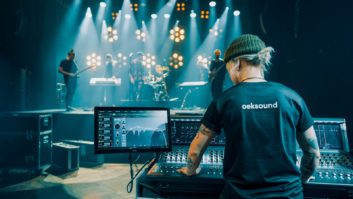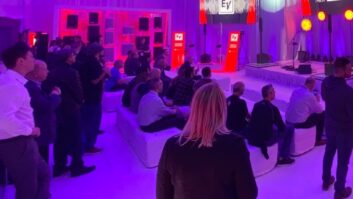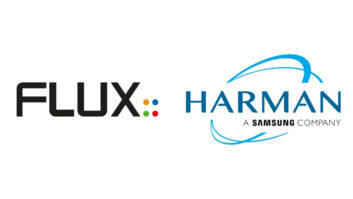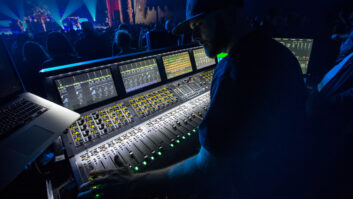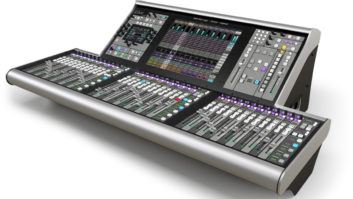Compared to behemoths like Musikmesse, NAB and AES, NSCA (March 16 to 18, 2006) is the biggest “little show” in the industry. Although smaller, it’s no lightweight, with 500 booths and 15 large demo rooms crammed into the gargantuan south hall of the Las Vegas Convention Center.
advertisement
Anywhere you went at this year’s NSCA, the talk was about networking, with real system control rather than simply moving audio over Cat-5 or optical fiber. Certainly, that’s also part of the networking equation, but we’re coming ever closer to putting the whole audio puzzle together. The emphasis at NSCA was solutions-oriented, from the educational programs to the show floor exhibits. Speaking of the latter, there was plenty to see and hear. Listed alphabetically, here are our top-10 picks from NSCA.
Incorporating technologies from its higher-end WMS 4000 cousins, AKG‘s (www.akgusa.com) WMS 40 PRO wireless includes the WMS 40 PRO Flexx, with up to three user-selectable frequencies per channel (nine simultaneous channels); a fixed-frequency WMS 40 PRO Single; and the WMS 40 PRO Dual, which lets two transmitters share a receiver. Transmitter options include guitar, micro-pen and the TM40, which locks into AKG’s D3700M/D880 M /C900 M mics. The coolest part? They’re rated for 30 hours of life from a single AA battery, which in a year could equate to hundreds of dollars in savings over standard 9V units.

Long hailed for his low-frequency designs, Tom Danley of Danley Sound Labs (www.danleysoundlabs.com) showed his full-range Synergy line. Using Tapped Horn technologies, the Synergy SH-50 is a high-SPL, horn-loaded, three-way speaker offering near-seamless overlap in tight arrays. Available with optional Class-D powering and onboard DSP, the single-horn design seems to defy physics with its dual 12-inch woofers, four 5-inch cone mids and 1-inch HF driver.

Finally making its public debut is the Dolby (www.dolby.com/livesound) Lake Processor, which takes Lake processing to the next level, with speaker management/EQ, global software control (via computer or wireless tablet) and up to eight channels of Lake Mesa EQ or up to 4×12 channels of Lake speaker processing. Its LimiterMax technology couples instantaneous attack-time peak (and true RMS) limiters for absolute clipping protection.
Does the world really need another proprietary networking protocol? Maybe so, says Eastern Acoustics Works (www.eaw.com), whose Ubiquity networking concept goes beyond basic routing and control. Ubiquity is said to provide the granularity for handling complex data streams such as beam steering parameters and tweaking single drivers in clusters/arrays. Unlike Ethernet subnets’ star topologies, Ubiquity’s mesh networking offers self-healing pathways, telephone-style addressing of devices in the system and SmaartLive support directly from EAW’s new UMX.96 digital mixer. Hardware bridges allow interfacing to other protocols or third-party gear.
Lectrosonics (www.lectrosonics.com) unveiled its RM controller for its equally mini SM series of tiny, high-powered bodypack wireless transmitters. Acting like an acoustic modem (remember those?), the RM sends a coded data string to the transmitter, using the mic as the interface to remotely adjust parameters, such as frequency select, audio trim, lockout and sleep mode commands to an SM unit that may be otherwise inaccessible due to costuming, hair, etc. Brilliant!

Meyer (www.meyersound.com) expands its MILO powered loudspeaker family with M’elodie, a 29×9.5×13-inch (WxHxD) compact curvilinear array. Designed for fixed installs in theaters, clubs and houses of worship, as well as corporate A/V, M’elodie can provide downfill/sidefill in a larger system with MICA arrays, or provide under-balcony or frontfill coverage. Shipping this month, the 65-pound unit offers 100-degree horizontal dispersion, 131dB peak SPLs and a 70 to 18k Hz response.

Already in use in various venues worldwide, Renkus-Heinz (www.renkus-heinz.com) showed its Iconyx digitally steerable array. Versatile and musical, systems are based on a number of powered 8-channel “stick” modules (each about 4 feet long), which can be combined to form tall columns for greater “reach” and used as is or with optional subwoofers. R-H’s BeamWare software can tweak the vertical pattern (symmetrical, asymmetrical, dual or custom) and aiming angle. A slick, hinged wallmount simplifies installs and gives precise horizontal control.
Roland (www.roland.com) demoed its RSS Digital Snake, A/B’d against line-level signals over 300 feet of traditional copper snaking. The difference wasn’t subtle at all: The analog had no top end or punch. Other advantages include running 40 channels of 24/96 over a single Cat-5e cable, simple “splits” using Ethernet switching hubs and ease of redundancy, as well as remote-controllable preamps, scene recall, low 375ms latency and PC/Mac software for configs and monitoring.
The Smaart measurement/analysis software from SIA Software (www.siasoft.com) grows up: Version 6 adds new features such as a mode for viewing two measurements simultaneously, enhanced impulse response, greater storage and display capabilities, and multichannel input device support (ASIO or Core Audio), but the big news is a reworked architecture so that Smaart can run native under Mac OS X and Windows, with support for Intel-based Macs coming soon.

Soundcraft (www.soundcraftdigital.com) previewed its Vi6™ large-format digital live desk. The Vi6’s fast, intuitive operation (using touch-screen color TFT monitors with rotary controls/switches mounted on the glass) is based on Studer’s Vista consoles. (Both companies are owned by Harman.) Standard are 64 input channels in two layers of 32 motorized faders assignable to 32 outputs, which can be groups, auxes or matrix outs, plus stereo and mono mixes. FaderGlow™ multicolor LED illumination—orange for aux sends, green for groups, etc.—marks fader assignments for status at a glance. I/Os are in a stage box that connects via MADI over Cat-5 to the board (or a second Vi6 for monitors), and the desk can act as control central for an Hpro HiQnet system of networked wireless, DSP, amps and speakers.
NSCA returns to Orlando next year, March 15 to 17, 2007. See you there!


